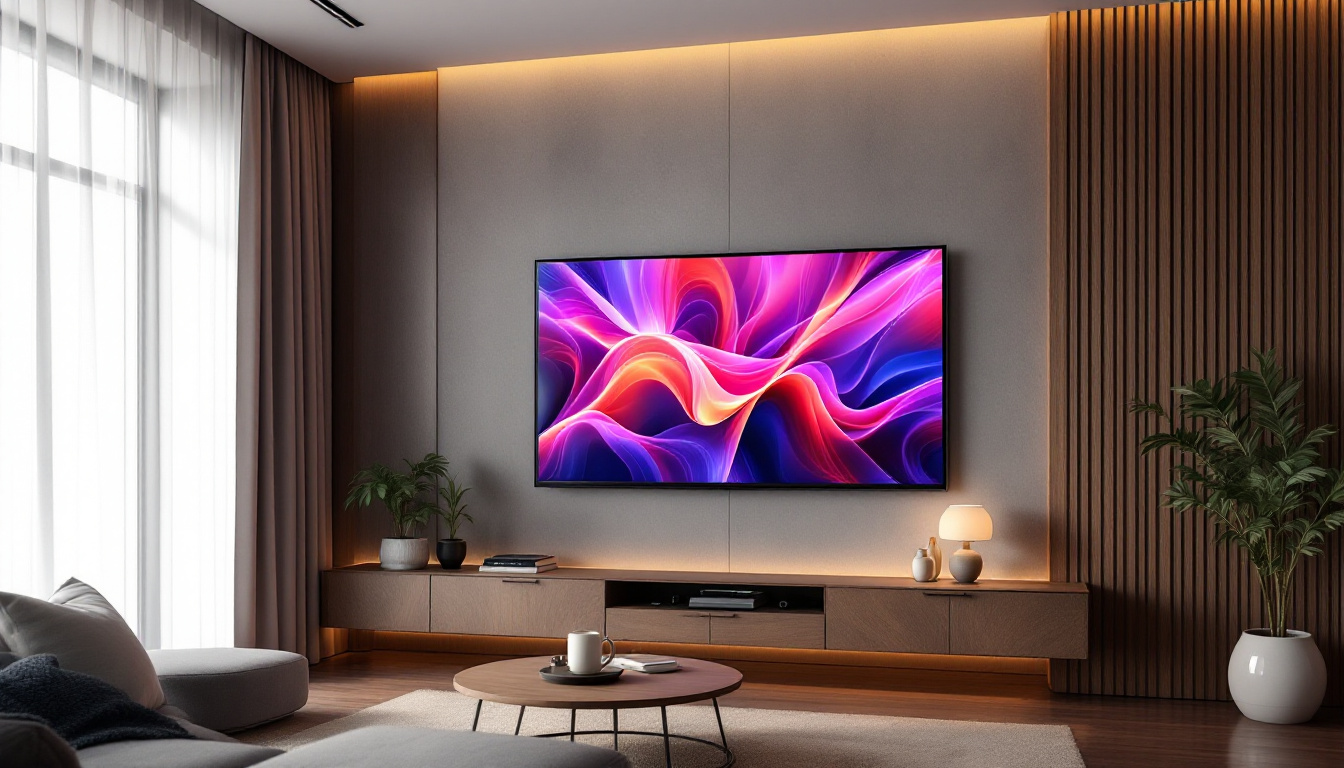Computer Monitor LCD Screen: LED Display Explained
In the realm of computer displays, the terms LCD and LED are often used interchangeably, leading to confusion among consumers. Understanding the differences and functionalities of these technologies is essential for making informed decisions when purchasing a monitor. This article delves into the intricacies of LCD screens and LED displays, shedding light on their characteristics, advantages, and applications.
Understanding LCD Technology
Liquid Crystal Display (LCD) technology has revolutionized the way we view content on screens. It utilizes liquid crystals sandwiched between two layers of glass or plastic, which manipulate light to produce images. This technology is widely used in various devices, including televisions, computer monitors, and smartphones. The evolution of LCD technology has also led to significant advancements in energy efficiency, making it a more environmentally friendly option compared to older display technologies.
How LCD Works
At its core, an LCD screen operates by blocking or allowing light to pass through the liquid crystals. When an electric current is applied, the crystals align in a way that controls the light’s passage, creating the desired colors and images. The backlight, usually provided by fluorescent lamps or LEDs, illuminates the screen, making it visible to the viewer. This intricate process involves a combination of polarizers, color filters, and electrodes, all working in harmony to deliver a seamless visual experience.
LCDs are known for their ability to produce sharp images and vibrant colors. They can also be made thinner and lighter than traditional cathode-ray tube (CRT) monitors, making them a popular choice for modern computing needs. Additionally, the lack of flicker in LCD displays contributes to reduced eye strain during prolonged use, which is a significant advantage for users who spend long hours in front of screens.
Types of LCD Displays
There are several types of LCD technologies, each with its unique characteristics. The most common types include Twisted Nematic (TN), In-Plane Switching (IPS), and Vertical Alignment (VA). Each type offers different advantages in terms of color accuracy, viewing angles, and response times. The choice of LCD type often depends on the specific application, whether it be gaming, professional design work, or general media consumption.
TN panels are known for their fast response times, making them ideal for gaming. However, they often suffer from limited viewing angles and color reproduction. On the other hand, IPS panels provide superior color accuracy and wider viewing angles, making them suitable for graphic design and professional use. VA panels strike a balance between the two, offering decent color reproduction and better contrast ratios. Furthermore, advancements in technology have led to hybrid panels that combine the strengths of these types, catering to a broader range of consumer needs. As manufacturers continue to innovate, we can expect even more enhancements in display technology, pushing the boundaries of what LCDs can achieve.
The Emergence of LED Technology
Light Emitting Diode (LED) technology has gained significant traction in the display market, often touted as a superior alternative to traditional LCDs. While LED displays are technically a type of LCD, they differ in how they produce light and display images. The evolution of LED technology has not only transformed consumer electronics but has also paved the way for innovations in various fields, including automotive lighting, architectural illumination, and even horticulture.
How LED Displays Work
LED displays utilize light-emitting diodes as their backlight source instead of the traditional fluorescent lamps used in standard LCDs. This change in backlighting technology allows for greater energy efficiency, improved brightness, and enhanced color accuracy. The diodes themselves emit light when an electric current passes through them, a process that is more efficient than the gas discharge used in fluorescent lamps. This fundamental difference contributes to the longevity and reliability of LED displays, making them a favored choice for both consumers and manufacturers.
There are two primary types of LED displays: edge-lit and full-array. Edge-lit LED displays have LEDs positioned around the edges of the screen, while full-array displays feature a grid of LEDs behind the entire screen. Full-array displays typically offer better contrast and uniformity in brightness, making them the preferred choice for high-quality visuals. Moreover, advancements in local dimming technology have allowed full-array displays to selectively dim specific areas of the screen, enhancing the viewing experience by providing deeper blacks and more vibrant colors.
Advantages of LED Displays
LED displays come with a plethora of advantages that make them an attractive option for consumers. One of the most notable benefits is their energy efficiency. LED technology consumes significantly less power than traditional LCDs, which can lead to cost savings over time. This energy efficiency not only benefits consumers financially but also contributes to a reduced carbon footprint, aligning with the growing demand for environmentally friendly technology.
Additionally, LED displays often provide higher brightness levels and improved color accuracy. This makes them particularly suitable for environments with high ambient light, such as offices or well-lit rooms. Furthermore, the thinner profile of LED monitors allows for sleeker designs, making them aesthetically pleasing for modern setups. The versatility of LED technology extends beyond just televisions and computer monitors; it is also being integrated into signage, digital billboards, and even wearable devices, showcasing its adaptability across various applications. As the technology continues to evolve, we can expect even more innovative uses and enhancements in the future, further solidifying LED’s place at the forefront of display technology.
Comparing LCD and LED Displays
While both LCD and LED displays share similarities, they also have distinct differences that can influence a buyer’s decision. Understanding these differences is crucial for selecting the right monitor for specific needs.
Image Quality
When it comes to image quality, LED displays generally outperform traditional LCDs. The use of LEDs as a backlight source allows for better contrast ratios and deeper blacks, resulting in more vibrant and lifelike images. This is particularly noticeable in full-array LED displays, which can dim individual zones of the screen to enhance contrast.
On the other hand, standard LCDs may struggle with producing deep blacks due to their reliance on fluorescent backlighting. This can lead to a washed-out appearance in darker scenes, making LED displays the preferred choice for multimedia consumption and gaming.
Energy Efficiency
Energy efficiency is another critical factor to consider when comparing LCD and LED displays. LED technology is inherently more energy-efficient due to its lower power consumption. This not only reduces electricity bills but also contributes to a smaller carbon footprint, making LED displays a more environmentally friendly option.
In contrast, traditional LCDs consume more power, particularly when using fluorescent backlighting. For users concerned about energy usage, LED displays present a compelling advantage.
Cost Considerations
Cost is often a deciding factor for consumers when purchasing a monitor. Generally, traditional LCD monitors tend to be more affordable than their LED counterparts. However, the price difference has been narrowing as LED technology becomes more prevalent in the market.
While LED displays may require a higher initial investment, their long-term benefits, such as energy savings and superior image quality, can justify the expense. Buyers should weigh their budget against their specific needs and preferences when making a decision.
Applications of LCD and LED Displays
Both LCD and LED displays have found their way into various applications, each serving different purposes based on their unique characteristics. Understanding these applications can help consumers choose the right technology for their needs.
LCD Displays in Professional Settings
LCD displays, particularly those with IPS technology, are widely used in professional settings such as graphic design, photography, and video editing. Their ability to reproduce accurate colors and provide wide viewing angles makes them ideal for tasks that require precision and attention to detail.
In addition, many office environments utilize LCD monitors for everyday tasks, such as word processing and data analysis. Their affordability and reliable performance make them a staple in corporate settings.
LED Displays in Entertainment
LED displays have become the go-to choice for entertainment purposes, particularly in home theaters and gaming setups. Their superior contrast ratios and vibrant colors enhance the viewing experience, making movies and games more immersive.
Moreover, LED technology is commonly used in large-scale displays, such as digital billboards and stadium screens. The brightness and clarity of LED displays make them suitable for outdoor use, where visibility is crucial.
Future Trends in Display Technology
The display technology landscape is continually evolving, with advancements paving the way for even more innovative solutions. As consumers become more discerning in their preferences, manufacturers are responding with cutting-edge technologies that enhance performance and user experience.
OLED and MicroLED Technologies
Organic Light Emitting Diode (OLED) technology has emerged as a competitor to traditional LCD and LED displays. OLED panels offer self-emissive properties, meaning each pixel emits its light. This results in superior contrast ratios, deeper blacks, and wider color gamuts. While OLED displays are currently more expensive, their growing popularity suggests they may become more accessible in the future.
MicroLED is another promising technology that combines the benefits of LED and OLED. MicroLED displays consist of tiny, individual LEDs that can create stunning visuals with high brightness and low power consumption. As research and development in this area continue, MicroLED may redefine the future of display technology.
Smart Displays and Integration
As technology advances, the integration of smart features into displays is becoming increasingly common. Smart displays come equipped with built-in operating systems, allowing users to access streaming services, browse the internet, and interact with applications directly from the monitor.
This trend is likely to continue, with manufacturers focusing on enhancing connectivity and user experience. Features such as voice control, touch interfaces, and seamless integration with other smart devices are expected to shape the future of computer monitors.
Conclusion
In summary, understanding the differences between LCD and LED displays is crucial for making informed decisions when purchasing a computer monitor. While both technologies have their merits, LED displays generally offer superior image quality, energy efficiency, and modern features that cater to the needs of today’s consumers.
As advancements in display technology continue to emerge, consumers can expect even more options that enhance their viewing experience. Whether for professional use, gaming, or entertainment, the right display technology can significantly impact productivity and enjoyment.
Ultimately, the choice between LCD and LED will depend on individual preferences, budget, and intended use. By considering the characteristics and applications of each technology, consumers can find the perfect monitor to suit their needs.
Discover Cutting-Edge LED Displays with LumenMatrix
Ready to elevate your visual experience with the latest in display technology? Look no further than LumenMatrix, a pioneer in LED display innovation. Our extensive range of solutions, including Indoor and Outdoor LED Wall Displays, Vehicle LED Displays, LED Poster Displays, LED Sports Displays, Floor LED Displays, Custom LED Displays, All-in-One LED Displays, and LED Transparent Displays, are designed to captivate and engage. Embrace the future of visual communication with LumenMatrix’s advanced digital signage and LED display solutions. Check out LumenMatrix LED Display Solutions today and transform the way you share your message with the world.































